Chamil Neungi Beoseot Baeksuk (참일능이버섯백숙)
3.0Km 2025-08-01
61, Gyoyukcheong-gil, Haenam-gun, Jeollanam-do
+82-61-536-6664
It is a good place to enjoy Korean dishes for health. This restaurant's signature menu is whole chicken soup with shingled hedgehog. This Korean dishes restaurant is located in Haenam-gun, Jeollanam-do.
Geomokjang Minbak Lodging (거목장민박)
3.7Km 2025-07-18
63, Minbakchon-gil, Samsan-myeon, Haenam-gun, Jeollanam-do
Geomokjang Minbak (‘B&B’) stands at the foot of Mount Doryunsan, Hanam-gun, Jeollanam-do, and is part of Museon Hanok Minbak Village. The hanok’s pillars and rafters are built of old pinewood, and the wooden floors, windows and doors are lined with Korean paper. All 7 rooms have modern bathrooms. In the large tree-shaded yard you can experience bonsai making for a small fee, while beyond the low stone wall are fields and trees. Geomokjang is a good base for exploring Haenam and is on the way to Daeheungsa, a temple with a thousand years of history.
Teleférico del Monte Duryunsan (두륜산케이블카)
5.0Km 2023-02-09
Daeheungsa-gil 88-45, Samsan-myeon, Haenam-gun, Jeollanam-do
El monte Duryunsan (703 m) es una famosa montaña de Jeollanam-do. Con ocho picos, es el hogar de diferentes templos y lugares históricos. La montaña, además, tiene una gran importancia como sitio de investigación por sus bosques de plantas de clima cálido y amplias hojas, y por sus árboles. Se puede acceder al pico de la montaña en 2-3 horas de escalada, desde la entrada del templo Daeheungsa o usando el teleférico (8 minutos), que sale desde la entrada en el lado opuesto de la montaña (y lleva a los visitantes a un punto más bajo que el pico). Desde lo alto de Duryunsan se pueden ver muchas islas de la región y, en un día claro, hasta se divisa el monte Hallasan de la isla de Jeju.
Parque Provincial del Monte Duryunsan (두륜산도립공원)
5.7Km 2023-02-09
Daeheungsa-gil 400, Samsan-myeon, Haenam-gun, Jeollanam-do.
Conteniendo muchos templos budistas y paisajes espectaculares, el monte Duryunsan mide 703 metros de altura y se encuentra en el sur de la península coreana. Formado por bosques subtropicales, la montaña es un interesante punto de observación por la diversidad floral. Durante el quinto año del reinado del rey Jinheung (año 544), el monje budista Ado construyó el templo Daedunsa, que es un importante lugar histórico relacionado también con el monje Seosan. Este templo presume de densos bosques de arces y camelias. Sobrecogedoras vistas de los valles y bonitos árboles rodean la carretera de 2 km que permite acceder al templo.
Templo Daeheungsa (대흥사) [Patrimonio de la Humanidad de la Unesco]
7.1Km 2025-08-08
Daeheungsa-gil 400, Samsan-myeon, Haenam-gun, Jeollanam-do.
El templo se encuentra ubicado en el interior del Parque Provincial del Monte Duryunsan, a 12 km de distancia hacia el sudeste de Haenam-eup. Fue construido por el monje Adohwasang, a los 14 años del reinado de Muryeong de la época Baekje, y a lo largo de la historia ha sido restaurado y reparado varias veces. En el año 1604, a los 37 años del reinado de Seonjo, el monje Seosandaesa predicó que el lugar estaría a salvo de los desastres naturales y se mantendría en calma durante mucho tiempo, por lo que en los últimos momentos de su vida, pidió conservar sus objetos personales en este templo. El nombre original del templo era Daedunsa, pero durante el período de la ocupación japonesa recibió el nombre de Daeheungsa, hasta que en el año 1993 volvió a ser nombrado como Daedunsa. El monje Seosandaesa es un personaje histórico que durante toda su vida se esforzó para proteger el país. Varias reliquias y pertenencias del monje se encuentran conservadas en este templo.
Haemaru Healingsoup (해마루 힐링숲)
11.7Km 2025-07-23
108-35, Donghae-gil, Haenam-gun, Jeollanam-do
The name 'Haemaru Healing Forest' was given by the owner of the guesthouse, with the subtitle 'A place where you can tell your story.' The guesthouse buildings are in 'ㄱ' shape. The main building, called 'anchae' in Korean, has floor area of 72m², which is big enough for up to 25 people. There are two rooms, a large living room, and a kitchen in this building. The rooms are furnished with sofa, television, air conditioner, refrigerator, and table just like an ordinary home so that guests can feel at home during their stay. The 'bakkatchae,' or 'detached house,' is a single room with capacity of 6 and is furnished with air conditioner and bathroom. The guesthouse is owned by a couple who still work in Seoul and need to travel back and forth between Seoul and Haenam frequently. They're both nature lovers, so their most favorite place in the house is the kitchen garden where they cultivate their own organic lettuce, perilla leaves, and chili peppers. The kitchen garden is open to guests who want to try the homegrown organic vegetables. Various experience programs are offered here as well, such as yunnori, dadeumi, jwibulnori, and kimchi making. Jwibulnori is a traditional Korean game played on the eve of Daeboreum or First Full Moon Day, where people burn dry grass on the ridges of rice paddies and fields and others spin cans of flames attached to the end of a stick or a sling. For safety reasons, this game is played with the consent and participation of the villagers, so be sure to ask the owner of the guesthouse when the game is played. It’s free for groups of more than 10 people. As for the kimchi-making class, it is offered by the guesthouse owner's younger brother and sister-in-law who live and run a kimchi factory in the village. They will teach you how to make kimchi, step-by-step, start to end. The kimchi-making class is a paid program, so be sure to ask the guesthouse owner how much and when the class is held.
Sitio Histórico Dasan Chodang (Antigua Residencia de Jeong Yak-yong) (다산초당(다산 정약용 유적지))
12.6Km 2023-05-31
Dasanchodang-gil 68-35, Doam-myeon, Gangjin-gun, Jeollanam-do.
Esta es la casa en la que residía Jeong Yak-yong (también conocido por Dasan, su seudónimo), el gran estudioso y erudito de la dinastía Joseon, durante su período de exilio, que dedicó a estudiar el Silhak (aprendizaje práctico). Jeong Yak-yong recibió un castigo por haber escrito una carta secreta llamada Hwang Sa-yeong Baekseo, y pasó en Gangjin, el lugar de exilio, 18 años. La mayoría de los libros famosos del erudito fueron escritos en este lugar y pasó sus últimos años de vida en su pueblo natal de Namyangju.
Da hyang so ckuk / 다향소축
12.9Km 2025-08-12
7-5, Dasanchodang 1-gil Doam-myeon, Gangjin-gun, Jeollanam-do
+82-10-3616-0360
'Dahyang Sochuk is a traditional Korean guesthouse with 70 years history located near the entrance to Dasan Chodang (Dasan Jeong Yakyong Historical Site) in Gangjin-gun, Jeollanam-do. The guesthouse is like a folk museum where guests get to see the items that Korean ancestors actually used. One of the advantages of staying at Dahyang Sochuk is that you can have all the green tea you want because there are wild green tea plants growing around the building. The areas around the guesthouses are decorated with unique bonsai trees and flowers all seasons for the guests to enjoy. All the rooms are coated with red clay and furnished with naturally dyed linens, both of which are healthy for the body while very smooth to the touch and aromatic. Right before winter, an array of potted chrysanthemums is placed along the entranceway, making you forget the cold weather for a moment. All in all, it’s a great place to stay and relax amid nature.
Templo Baengnyeonsa en Gangjin (백련사(강진))
13.2Km 2021-02-18
Baengnyeonsa-gil 145, Doam-myeon, Gangjin-gun, Jeollanam-do.
061-432-0837
Construido en base a la doctrina Cheontae, el templo Baengnyeonsa tuvo un rol importante en la difusión del budismo. Localizado al este del monte Mandeoksan, es famoso por su bosque de camelias que bordea el camino hacia el templo. Una de las dos colonias más bellas de camelias de Corea, incluidas las camelias de la isla Odongdo en Yeosu, esta colonia de camelias fue designada Tesoro Natural Nº 151. Las camelias florecen a finales de marzo. La bahía de Gangjin, vista desde el templo Baengnyeonsa, y el camino que lleva desde el templo hasta Dasan Chodang también son famosos por su belleza escénica.
Isla Gaudo (가우도)
14.3Km 2024-12-03
Wolgot-ro 473, Doam-myeon, Gangjin-gun, Jeollanam-do.
Esta isla está conectada al distrito continental de Daegu-myeon, en el municipio de Gangjin-gun, por un puente colgante de 438 metros y al distrito de Doam-myeon por otro puente de 716 metros. Hay un bello sendero de excursión para recorrer, llamado Hamkkehae-gil, de 2,5 km de largo, con vistas de las montañas y el mar.

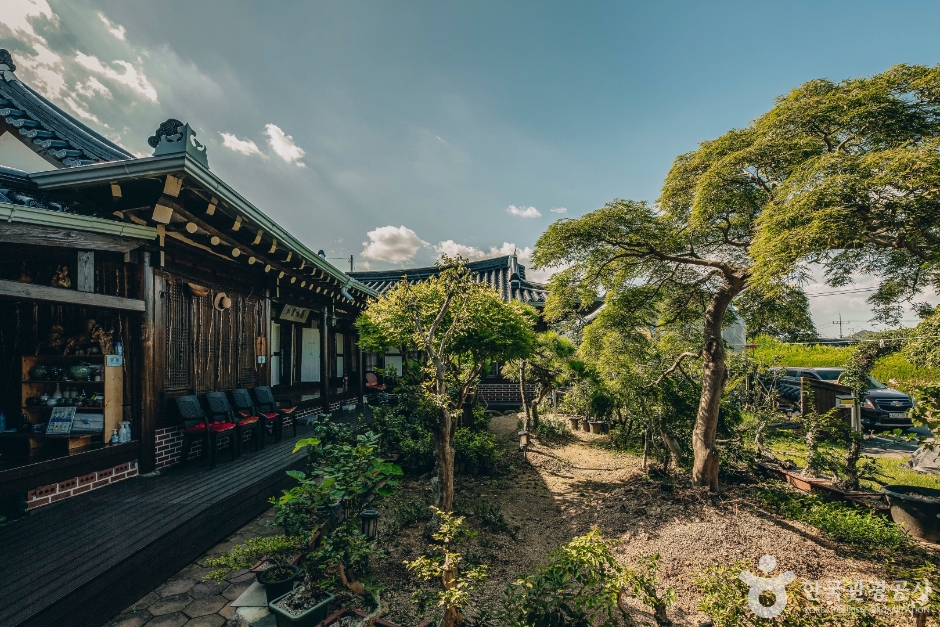

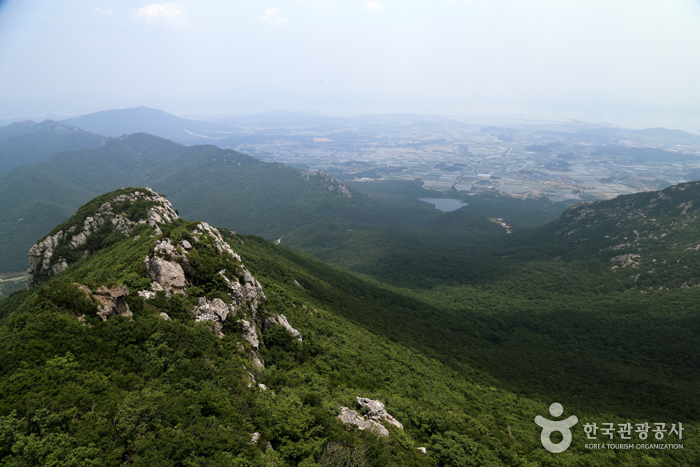
![Templo Daeheungsa (대흥사) [Patrimonio de la Humanidad de la Unesco]](http://tong.visitkorea.or.kr/cms/resource/28/2367428_image2_1.jpg)
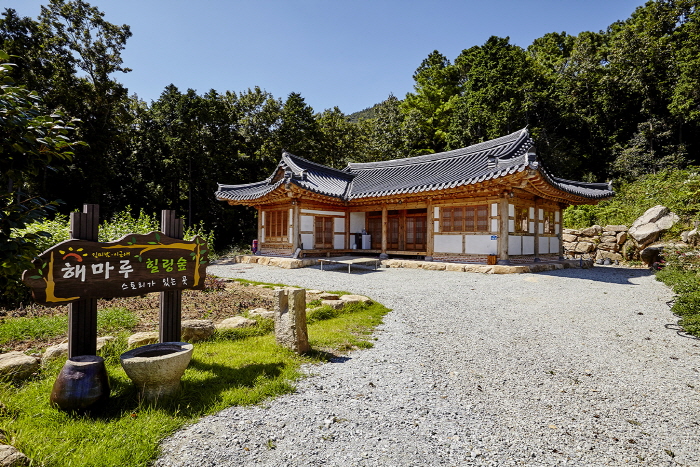
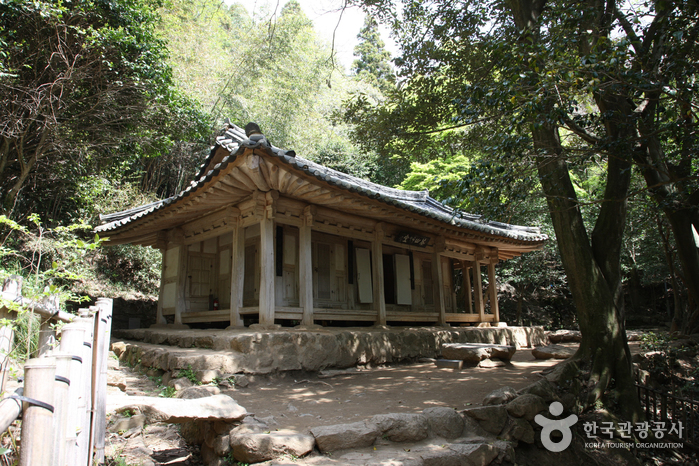

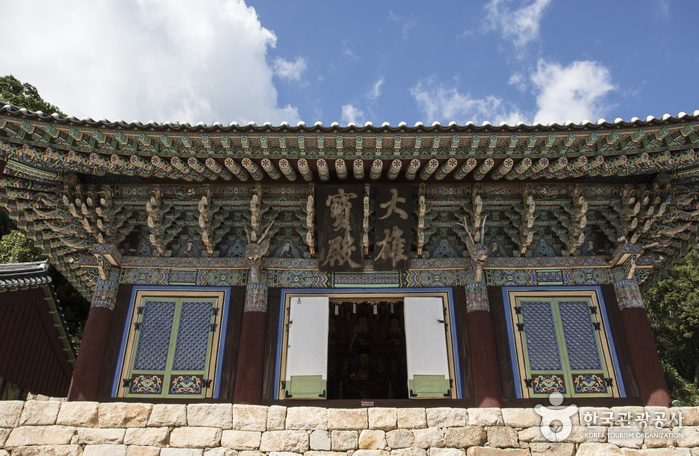
 Español
Español
 한국어
한국어 English
English 日本語
日本語 中文(简体)
中文(简体) Deutsch
Deutsch Français
Français Русский
Русский